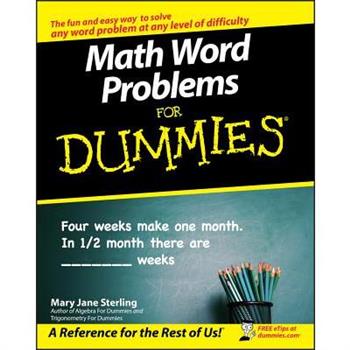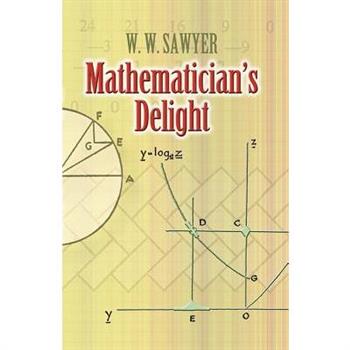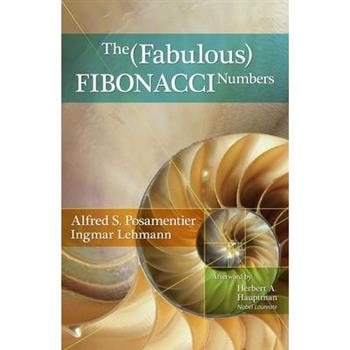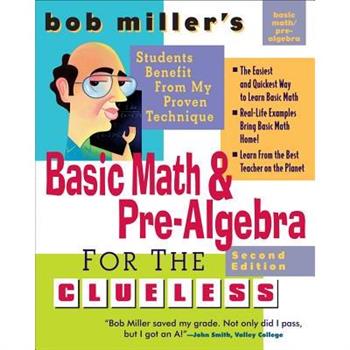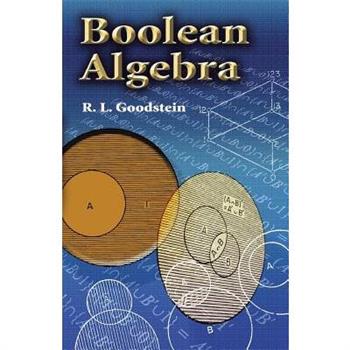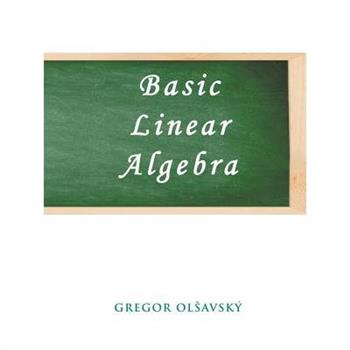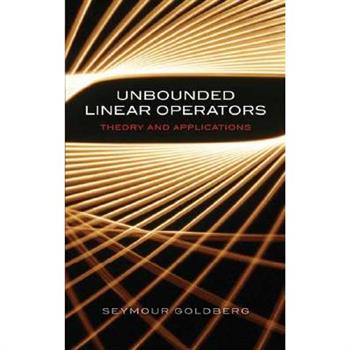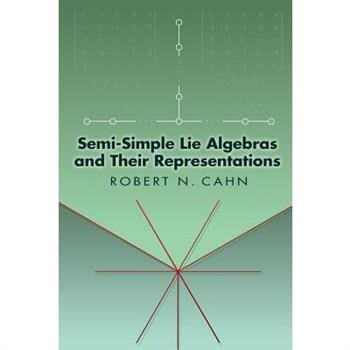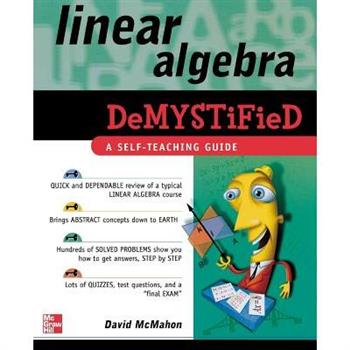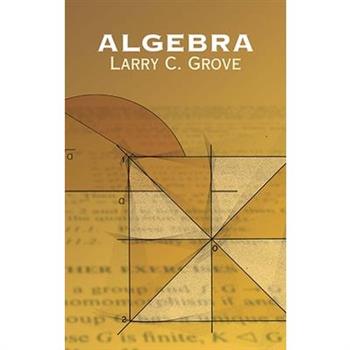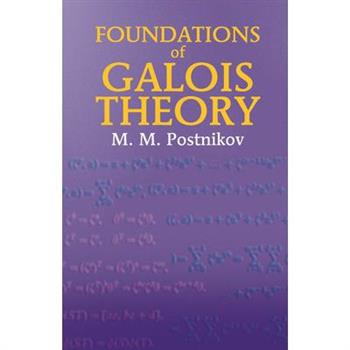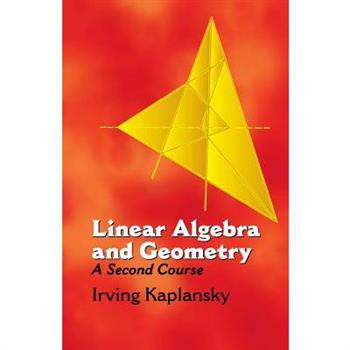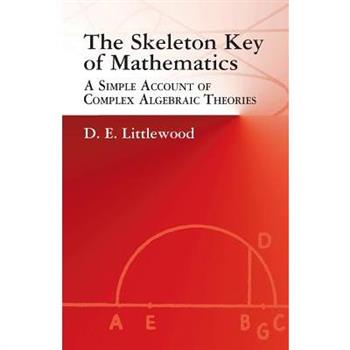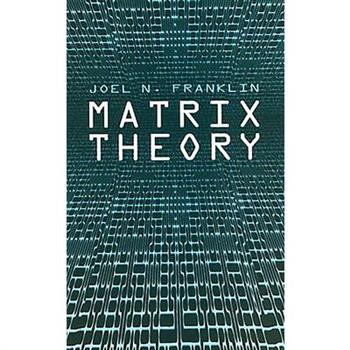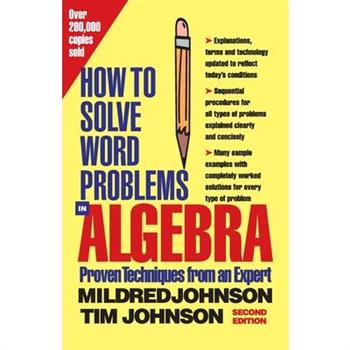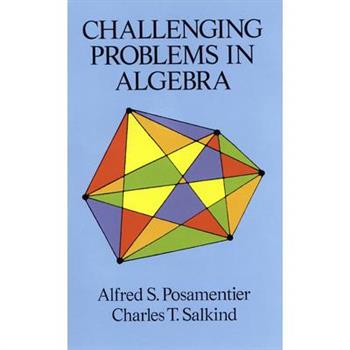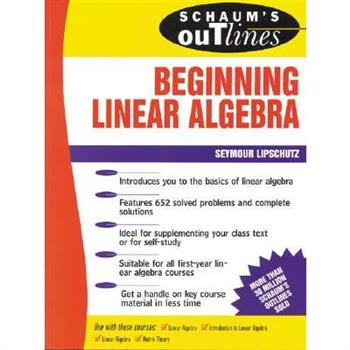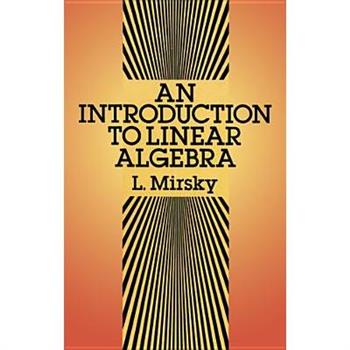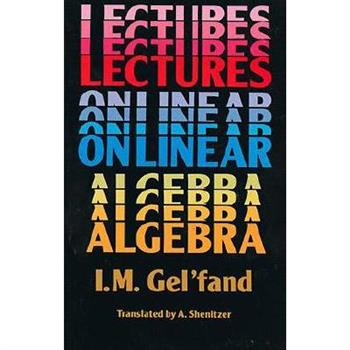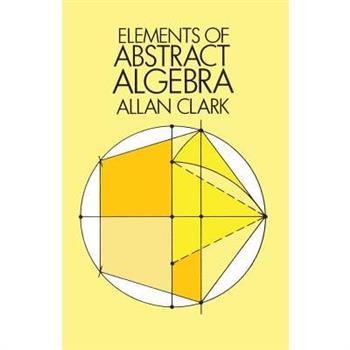Abstract Lie Algebras
Solid but concise, this account of Lie algebra emphasizes the theory's simplicity and offers new approaches to major theorems. Author David J. Winter, a Professor of Mathematics at the University of Michigan, also presents a general, extensive treatment of Cartan and related Lie subalgebras over arbitrary fields.Preliminary material covers modules and nonassociate algebras, followed by a compact, self-contained development of the theory of Lie algebras of characteristic 0. Topics include solvable and nilpotent Lie algebras, Cartan subalgebras, and Levi's radical splitting theorem and the complete reducibility of representations of semisimple Lie algebras. Additional subjects include the isomorphism theorem for semisimple Lie algebras and their irreducible modules, automorphism of Lie algebras, and the conjugacy of Cartan subalgebras and Borel subalgebras. An extensive theory of Cartan and related subalgebras of Lie algebras over arbitrary fields is developed in the final chapter, and an appendix offers background on the Zariski topology.
Introduction to Field Theory
A fascinating branch of algebra with numerous applications, field theory leads the way to one of the most important theorems of mathematics, the fundamental theorem of Galois theory. This text ranges from field theory's basic definitions to its most significant results and applications, introducing both the spirit and techniques of abstract algebra. Appropriate for undergraduate students in pure mathematics, it presupposes minimal knowledge of elementary group theory.Acclaimed by American Mathematical Monthly as "an excellent introduction," this treatment begins by developing the elementary properties of rings and fields and examining a variety of homomorphisms, vector spaces, and polynomials. Subsequent chapters explore extension fields and their classifications as well as Artin's approach to Galois theory. The concluding section focuses on applications, with considerations of finite fields, cyclotomic extensions, solution by radicals, generic polynomials, and much more.
Math Word Problems for Dummies
Covers percentages, probability, proportions, and more Get a grip on all types of word problems by applying them to real life Are you mystified by math word problems? This easy-to-understand guide shows you how to conquer these tricky questions with a step-by-step plan for finding the right solution each and every time, no matter the kind or level of problem. From learning math lingo and performing operations to calculating formulas and writing equations, you'll get all the skills you need to succeed! Discover how to: * Translate word problems into plain English * Brush up on basic math skills * Plug in the right operation or formula * Tackle algebraic and geometric problems * Check your answers to see if they work
The Fabulous Fibonacci Numbers
The most ubiquitous, and perhaps the most intriguing, number pattern in mathematics is the Fibonacci sequence. In this simple pattern beginning with two ones, each succeeding number is the sum of the two numbers immediately preceding it (1, 1, 2, 3, 5, 8, 13, 21, ad infinitum). Far from being just a curiosity, this sequence recurs in structures found throughout nature - from the arrangement of whorls on a pinecone to the branches of certain plant stems. All of which is astounding evidence for the deep mathematical basis of the natural world. With admirable clarity, two veteran math educators take us on a fascinating tour of the many ramifications of the Fibonacci numbers. They begin with a brief history of a distinguished Italian discoverer, who, among other accomplishments, was responsible for popularizing the use of Arabic numerals in the West. Turning to botany, the authors demonstrate, through illustrative diagrams, the unbelievable connections between Fibonacci numbers and natural forms (pineapples, sunflowers, and daisies are just a few examples). In art, architecture, the stock market, and other areas of society and culture, they point out numerous examples of the Fibonacci sequence as well as its derivative, the "golden ratio." And of course in mathematics, as the authors amply demonstrate, there are almost boundless applications in probability, number theory, geometry, algebra, and Pascal's triangle, to name a few.Accessible and appealing to even the most math-phobic individual, this fun and enlightening book allows the reader to appreciate the elegance of mathematics and its amazing applications in both natural and cultural settings.
Bob Miller's Basic Math and Pre-Algebra for the Clueless
STUDENT TESTED AND APPROVED!If you suffer from math anxiety, then sign up for private tutoring with Bob Miller!Do mathematics and algebraic formulas leave your head spinning?If so, you are like hundreds of thousands of other students who face math-especially, algebra-with fear. Luckily, there is a cure: Bob Miller's Clueless series! Like the teacher you always wished you had (but never thought existed), Bob Miller brings knowledge, empathy, and fun to math and pre-algebra. He breaks down the learning process in an easy, non-technical way and builds it up again using his own unique methods.Meant to bridge the gulf between the student, the textbook, and the teacher, Basic Math and Pre-Algebra for the Clueless is packed with all the latest information you need to conquer basic math and pre-algebra, including: Anxiety-reducing features on every pageQuick tips for solving difficult problemsFull explanations of basic principles to make hard problems easyBite-sized math portions that short study sessions (and attention spans)"I am always delighted when a student tells me that he or she hated math ... but taking a class with me has made math understandable ... even enjoyable." Now it's your turn. Sharpen your #2 pencils, and let Bob Miller show you how to never be clueless again!
Boolean Algebra
This elementary treatment by a distinguished mathematician begins with the algebra of classes and proceeds to discussions of several different axiomatizations and Boolean algebra in the setting of the theory of partial order. Numerous examples appear throughout the text, plus full solutions. 1963 edition.
Basic Linear Algebra
This book is an introductory linear algebra text. The topics are covered in the traditional order: linear systems, matrix algebra, vector spaces, linear transformations, orthogonality, and the eigenvalue/eigenvector problem. The book seeks to explain and discover the important concepts of linear algebra using well-chosen examples. Proofs of many important results are done if the proof can be accomplished in a succinct, straightforward fashion. There are over 100 worked-out examples in the text as well as a complete outline of every chapter and extensive review problems which test the students knowledge of the material covered in each chapter. There are over 1200 exercises in the text, which were created by the author with care to include exercises which resemble problems done in the text. Definitions are well marked and theorems are stated as briefly as possible in order to enhance the ability of the student to remember the result. In a slightly novel way, the answers to the odd problems are given directly next to the problem. Applications such as heat transfer, spring/mass systems, population dynamics, and systems of differential equations are sprinkled throughout the text.
Algebra 2 Homeschool Testing Book
Saxon Homeschool Algebra 2 Testing Book 3rd Edition 32 test forms for homeschooling Grades: 9-12
Semi-Simple Lie Algebras And Their Representations
Designed to acquaint students of particle physics already familiar with SU(2) and SU(3) with techniques applicable to all simple Lie algebras, this text is especially suited to the study of grand unification theories. Subjects include simple roots and the Cartan matrix, the classical and exceptional Lie algebras, the Weyl group, and more. 1984 edition.
Linear Algebra Demystified
Taught at junior level math courses at every university, Linear Algebra is essential for students in almost every technical and analytic discipline.
Arithmetic And Algebra...Again
The bestselling guide updated and expanded for today's mathphobesWritten by two pioneers of the concept of math anxiety and how to overcome it, Arithmetic and Algebra Again has helped tens of thousands of people conquer their irrational fear of math.This revised and expanded second edition of the perennial bestseller: Features the latest techniques for breaking through common anxieties about numbers Takes a real-world approach that lets mathphobes learn the math they need as they need it Covers all key math areas--from whole numbers and fractions to basic algebra Features a section on practical math for banking, mortgages, interest, and statistics and probability Includes a new section on the graphing calculator, a chapter on the metric system, a section on word problems, and all updated exercises
Algebra
This graduate-level text is intended for initial courses in algebra that begin with first principles but proceed at a faster pace than undergraduate-level courses. It employs presentations and proofs that are accessible to students, and it provides numerous concrete examples.Exercises appear throughout the text, clarifying concepts as they arise; additional exercises, varying widely in difficulty, are included at the ends of the chapters. Subjects include groups, rings, fields and Galois theory, modules, and structure of rings and algebras. Further topics encompass infinite Abelian groups, transcendental field extensions, representations and characters of finite groups, Galois groups, and additional areas.Based on many years of classroom experience, this self-contained treatment breathes new life into abstract concepts.
Loving Math
This book was written for high school students and teachers who love exploring beyond standard math curricula for a deeper understanding of the principles and applications of mathematics. It is also for anyone who loves the pursuit of a problem solution, including both professional and amateur mathematicians. The vehicle that transports us through this exploration is the study and solution of classical and advanced math problems. As a high school math student, an engineer, a businessman and, ultimately, a high school math teacher, I collected and created math problems and solutions that can be used for advanced study. Some of the problems may be very familiar to you; some may not. A few may be quite easy to do; others will take more time. Included are classical proofs and their extensions that are often omitted in today's curricula. Beyond the pure enjoyment of this exploration, we also attempt to find a "deeper understanding" of the math. We address four larger aspects of "understanding," namely: convention, evidence, perspective and connection. A portion of these aspects is addressed in the solutions, themselves. The rest is in comments, which come after the solutions. The comments range widely, including: additional points regarding the math itself, historical factoids, linguistics, suggestions for teachers, some personal experiences regarding the material, etc. Readers who only skim the problems and solutions might still find the applications and comments quite interesting. It is hoped that this book will assist teachers and students alike in exploring the subject of mathematics in a new way, whether using material that is thousands of years old, or recently developed. Each problem can be used as a single assignment, done in a few minutes, or a term project that could require intuition, technique, research and/or fortitude (to plow through it). The material can be adapted for use in the standard classroom, subject to students' ability and the constrictions of uniform curricula. It is, perhaps, more applicable to classrooms with the freedom to experiment with project learning and with longer assignment periods. School math clubs or math teams might find this text a handy reference to hone skills, learn new techniques and satisfy the quest for more exciting material beyond the routine. Although the primary focus here is the application of math principles to math problems, these studies are extended to interdisciplinary examples in the sciences, engineering, finance, social studies, etc. The subject material itself is organized into groups. There are twenty-two geometry/trigonometry problems, many of which are "classic proofs." Though some have been forgotten or ignored at large, they are offered here with some new ideas and approaches. There are ten algebra problems, all of which are extensions of a standard curriculum, and offer fresh insights when studied as a group. Statistics, the newest subject to be added to the high school curriculum, has three problems. And calculus, which is not always studied in high schools, has five problems.
Linear Algebra for Engineers and Scientists Using MATLAB
Foundations of Galois Theory
Written by a prominent mathematician, this text offers advanced undergraduate and graduate students a virtually self-contained treatment of the basics of Galois theory. The source of modern abstract algebra and one of abstract algebra's most concrete applications, Galois theory serves as an excellent introduction to group theory and provides a strong, historically relevant motivation for the introduction of the basics of abstract algebra.This two-part treatment begins with the elements of Galois theory, focusing on related concepts from field theory, including the structure of important types of extensions and the field of algebraic numbers. A consideration of relevant facts from group theory leads to a survey of Galois theory, with discussions of normal extensions, the order and correspondence of the Galois group, and Galois groups of a normal subfield and of two fields. The second part explores the solution of equations by radicals, returning to the general theory of groups for relevant facts, examining equations solvable by radicals and their construction, and concluding with the unsolvability by radicals of the general equation of degree n >= 5.
Schaum's Outline of Abstract Algebra
Tough Test Questions? Missed Lectures? Not Rnough Time?Fortunately for you, there's Schaum's Outlines. More than 40 million students have trusted Schaum's to help them succeed in the classroom and on exams. Schaum's is the key to faster learning and higher grades in every subject. Each Outline presents all the essential course information in an easy-to-follow, topic-by-topic format. You also get hundreds of examples, solved problems, and practice exercises to test your skills. This Schaum's Outline gives youPractice problems with full explanations that reinforce knowledgeCoverage of the most up-to-date developments in your course fieldIn-depth review of practices and applicationsFully compatible with your classroom text, Schaum's highlights all the important facts you need to know. Use Schaum's to shorten your study time-and get your best test scores!Schaum's Outlines-Problem Solved.
Linear Algebra and Geometry
The author of this text seeks to remedy a common failing in teaching algebra: the neglect of related instruction in geometry. This volume features examples, exercises, and proofs. 1974 edition.
Boolean Reasoning
A systematic treatment of Boolean reasoning, this concise, newly revised edition combines the works of early logicians with recent investigations, including previously unpublished research results.For the benefit of readers without formal training in mathematics, the text starts with an overview of elementary mathematical concepts and outlines the theory of Boolean algebras, based on Huntington's postulate. It defines operators for elimination, division, and expansion, providing a coherent and systematic basis for subsequent discussions of syllogistic reasoning, the solution of Boolean equations, and functional deduction.Examples and end-of-chapter problems appear throughout the book, many taken from the design for switching systems. Two concluding chapters deal with applications; one applies Boolean reasoning to diagnostic problems, and the other discusses the design of multiple-output logic-circuits.
The Skeleton Key of Mathematics
As the title promises, this helpful volume offers easy access to the abstract principles common to science and mathematics. It eschews technical terms and omits troublesome details in favor of straightforward explanations that will allow scientists to read papers in branches of science other than their own, mathematicians to appreciate papers on topics on which they have no specialized knowledge, and other readers to cultivate an improved understanding of subjects employing mathematical principles. The broad scope of topics encompasses Euclid's algorithm; congruences; polynomials; complex numbers and algebraic fields; algebraic integers, ideals, and p-adic numbers; groups; the Galois theory of equations; algebraic geometry; matrices and determinants; invariants and tensors; algebras; group algebras; and more."It is refreshing to find a book which deals briefly but competently with a variety of concatenated algebraic topics, that is not written for the specialist," enthused the Journal of the Institute of ActuariesStudents' Society about this volume, adding "Littlewood's book can be unreservedly recommended."
Matrix Theory
Not only is matrix theory significant in a wide range of fields mathematical economics, quantum physics, geophysics, electrical network synthesis, crystallography, and structural engineering, among others-but with the vast proliferation of digital computers, knowledge of matrix theory is a must for every modern engineer, mathematician, and scientist. Matrices represent linear transformations from a finiteset of numbers to another finite set of numbers.Since many important problems are linear, and since digital computers with finite memory manipulate only finite sets of numbers, the solution of linear problems by digital computers usually involves matrices. Developed from the author's course on matrix theory at the CaliforniaInstitute of Technology, the book begins with a concise presentation of the theory of determinants, continues with a discussion of classical linear algebra, and an optional chapter on the use of matrices to solve systems of linear triangularizations of Hermitian and nonHermitian matrices, as well as a chapter presenting a proof of the difficult and important matrix theory of Jordan. The book concludes with discussions of variational principles and perturbation theory of matrices, matrix numerical analysis, and an introduction to the subject of linear computations.The book is designed to meet many different needs, and because it is mathematically rigorous, it may be used by students of pure and applied mathematics. Since it is oriented towards applications, it is valuable to students of engineering, science, and the social sciences. And because it contains the basic preparation in matrix theory required for numerical analysis, it can be used by students whose main interest is computers. The book assumes very little mathematical preparation, and except for the single section on the continuous dependence of eigenvalues on matrices, a knowledge of elementary algebra and calculus is sufficient.
How to Solve Word Problems in Algebra, 2nd Edition
Solving word problems has never been easier than with Schaum's How to Solve Word Problems in Algebra!This popular study guide shows students easy ways to solve what they struggle with most in algebra: word problems. How to Solve Word Problems in Algebra, Second Edition, is ideal for anyone who wants to master these skills. Completely updated, with contemporary language and examples, features solution methods that are easy to learn and remember, plus a self-test.
Mathematics
". . . Nothing less than a major contribution to the scientific culture of this world." -- The New York Times Book Review This major survey of mathematics, featuring the work of 18 outstanding Russian mathematicians and including material on both elementary and advanced levels, encompasses 20 prime subject areas in mathematics in terms of their simple origins and their subsequent sophisticated development. As Professor Morris Kline of New York University noted, "This unique work presents the amazing panorama of mathematics proper. It is the best answer in print to what mathematics contains both on the elementary and advanced levels." Beginning with an overview and analysis of mathematics, the first of three major divisions of the book progresses to an exploration of analytic geometry, algebra, and ordinary differential equations. The second part introduces partial differential equations, along with theories of curves and surfaces, the calculus of variations, and functions of a complex variable. It further examines prime numbers, the theory of probability, approximations, and the role of computers in mathematics. The theory of functions of a real variable opens the final section, followed by discussions of linear algebra and nonEuclidian geometry, topology, functional analysis, groups, and other algebraic systems. Thorough, coherent explanations of each topic are further augmented by numerous illustrative figures, and every chapter concludes with a suggested reading list. Formerly issued as a three-volume set, this mathematical masterpiece is now available in a convenient and modestly priced one-volume edition, perfect for study or reference. "This is a masterful English translation of a stupendous and formidable mathematical masterpiece . . ." -- Social Science
Schaum's Outline of Beginning Linear Algebra
Confusing Textbooks? Missed Lectures? Not Enough Time?Fortunately for you, there's Schaum's Outlines. More than 40 million students have trusted Schaum's to help them succeed in the classroom and on exams. Schaum's is the key to faster learning and higher grades in every subject. Each Outline presents all the essential course information in an easy-to-follow, topic-by-topic format. You also get hundreds of examples, solved problems, and practice exercises to test your skills. This Schaum's Outline gives youPractice problems with full explanations that reinforce knowledgeCoverage of the most up-to-date developments in your course fieldIn-depth review of practices and applicationsFully compatible with your classroom text, Schaum's highlights all the important facts you need to know. Use Schaum's to shorten your study time-and get your best test scores!Schaum's Outlines-Problem Solved.
Concepts of Modern Mathematics
Some years ago, "new math" took the country's classrooms by storm. Based on the abstract, general style of mathematical exposition favored by research mathematicians, its goal was to teach students not just to manipulate numbers and formulas, but to grasp the underlying mathematical concepts. The result, at least at first, was a great deal of confusion among teachers, students, and parents. Since then, the negative aspects of "new math" have been eliminated and its positive elements assimilated into classroom instruction.In this charming volume, a noted English mathematician uses humor and anecdote to illuminate the concepts underlying "new math" groups, sets, subsets, topology, Boolean algebra, and more. According to Professor Stewart, an understanding of these concepts offers the best route to grasping the true nature of mathematics, in particular the power, beauty, and utility of pure mathematics. No advanced mathematical background is needed (a smattering of algebra, geometry, and trigonometry is helpful) to follow the author's lucid and thought-provoking discussions of such topics as functions, symmetry, axiomatics, counting, topology, hyperspace, linear algebra, real analysis, probability, computers, applications of modern mathematics, and much more.By the time readers have finished this book, they'll have a much clearer grasp of how modern mathematicians look at figures, functions, and formulas and how a firm grasp of the ideas underlying "new math" leads toward a genuine comprehension of the nature of mathematics itself.
Quick Algebra Review
The fastest, easiest way to brush up on your algebra! Quick AlgebraReview Need to hone your algebra skills? This bestselling reviewcourse in intermediate algebra gives you all the concepts, procedures, and problem-solving methods you need to succeed. * Each chapter begins with an easy-to-use chart that zeroes in onyour problem areas. Now you can avoid wasting hours rehashingfamiliar concepts. * Every key algebraic concept is covered thoroughly--includingpositive and negative numbers, fractions, rational numbers, factoring, linear equations, quadratic equations, and wordproblems. * Hundreds of questions, answers, review problems, and quizzes helpyou to test your progress every step of the way. Now updated and revised to be even more relevant and accessiblethan ever, Quick Algebra Review is packed with practical examplesdrawn from real-life situations. Cover Design: Donald Munson
An Introduction to Linear Algebra
The straight-forward clarity of the writing is admirable. -- American Mathematical Monthly.This work provides an elementary and easily readable account of linear algebra, in which the exposition is sufficiently simple to make it equally useful to readers whose principal interests lie in the fields of physics or technology. The account is self-contained, and the reader is not assumed to have any previous knowledge of linear algebra. Although its accessibility makes it suitable for non-mathematicians, Professor Mirsky's book is nevertheless a systematic and rigorous development of the subject. Part I deals with determinants, vector spaces, matrices, linear equations, and the representation of linear operators by matrices. Part II begins with the introduction of the characteristic equation and goes on to discuss unitary matrices, linear groups, functions of matrices, and diagonal and triangular canonical forms. Part II is concerned with quadratic forms and related concepts. Applications to geometry are stressed throughout; and such topics as rotation, reduction of quadrics to principal axes, and classification of quadrics are treated in some detail. An account of most of the elementary inequalities arising in the theory of matrices is also included. Among the most valuable features of the book are the numerous examples and problems at the end of each chapter, carefully selected to clarify points made in the text.
Lectures on Linear Algebra
Prominent Russian mathematician's concise, well-written exposition considers n-dimensional spaces, linear and bilinear forms, linear transformations, canonical form of an arbitrary linear transformation, and an introduction to tensors. While not designed as an introductory text, the book's well-chosen topics, brevity of presentation, and the author's reputation will recommend it to all students, teachers, and mathematicians working in this sector.
Matrices and Linear Algebra
Linear algebra is one of the central disciplines in mathematics. A student of pure mathematics must know linear algebra if he is to continue with modern algebra or functional analysis. Much of the mathematics now taught to engineers and physicists requires it.This well-known and highly regarded text makes the subject accessible to undergraduates with little mathematical experience. Written mainly for students in physics, engineering, economics, and other fields outside mathematics, the book gives the theory of matrices and applications to systems of linear equations, as well as many related topics such as determinants, eigenvalues, and differential equations.Table of Contents: l. The Algebra of Matrices2. Linear Equations3. Vector Spaces4. Determinants5. Linear Transformations6. Eigenvalues and Eigenvectors7. Inner Product Spaces8. Applications to Differential EquationsFor the second edition, the authors added several exercises in each chapter and a brand new section in Chapter 7. The exercises, which are both true-false and multiple-choice, will enable the student to test his grasp of the definitions and theorems in the chapter. The new section in Chapter 7 illustrates the geometric content of Sylvester's Theorem by means of conic sections and quadric surfaces. 6 line drawings. lndex. Two prefaces. Answer section.
Elements of Abstract Algebra
This concise, readable, college-level text treats basic abstract algebra in remarkable depth and detail. An antidote to the usual surveys of structure, the book presents group theory, Galois theory, and classical ideal theory in a framework emphasizing proof of important theorems.Chapter I (Set Theory) covers the basics of sets. Chapter II (Group Theory) is a rigorous introduction to groups. It contains all the results needed for Galois theory as well as the Sylow theorems, the Jordan-Holder theorem, and a complete treatment of the simplicity of alternating groups. Chapter III (Field Theory) reviews linear algebra and introduces fields as a prelude to Galois theory. In addition there is a full discussion of the constructibility of regular polygons. Chapter IV (Galois Theory) gives a thorough treatment of this classical topic, including a detailed presentation of the solvability of equations in radicals that actually includes solutions of equations of degree 3 and 4 ― a feature omitted from all texts of the last 40 years. Chapter V (Ring Theory) contains basic information about rings and unique factorization to set the stage for classical ideal theory. Chapter VI (Classical Ideal Theory) ends with an elementary proof of the Fundamental Theorem of Algebraic Number Theory for the special case of Galois extensions of the rational field, a result which brings together all the major themes of the book.The writing is clear and careful throughout, and includes many historical notes. Mathematical proof is emphasized. The text comprises 198 articles ranging in length from a paragraph to a page or two, pitched at a level that encourages careful reading. Most articles are accompanied by exercises, varying in level from the simple to the difficult.
Fundamental Concepts of Algebra
This uncommonly interesting volume has been a favorite for 30 years, and is now available for the first time in a modestly priced paperback edition. Beginning with the fundamentals of numbers and sets, the author clearly guides the reader through the often discouraging complexities of algebra. Meserve presents the fundamental concepts of algebra illustrated by numerous examples- and, in many cases, the theory is further explicated by suitable sequences of exercises.The author's aim is to introduce the concepts of higher mathematics while bringing the reader to a more thorough understanding of elementary mathematics. His lucid explanations cover these major areas: OUR NUMBER SYSTEM: Sets, Cardinal Numbers, Order Relations, Real Numbers, Fields and Number Systems, more.THEORY OF NUMBERS: Divisibility, Prime Numbers, Bases, Division Algorithm, Decimal Notations, Linear Congruences, more.THEORY OF POLYNOMIALS: Rational Functions, Irreducible Polynomials, Functions, Limits, Continuity, Derivatives, more.THEORY OF EQUATIONS: Zeros of a Polynomial, Change of a Variable, Number of Roots, Quartic Equations, more.DETERMINANTS AND MATRICES: Historical Development, Permutations, Inversions, Transpositions, Cramer's Rule, more.CONSTRUCTIONS: The Algebraic Viewpoint, Classical Constructions, Mechanical Angle Trisectors, Linkages, more.GRAPHICAL REPRESENTATIONS: Euclidean and Complex Spaces, Conic Sections, Quadric Surfaces, Curve Tracing, more.While intended for students who have previously studied college mathematics through calculus, this book has also been successfully used where calculus was not a prerequisite. It provides a very easily followed presentation and may also be used as an introductory or supplementary textbook. For prospective teachers of secondary mathematics, for students preparing for specialized advanced undergraduate courses in mathematics, and for the general reader in search of a firmer grasp of the essentials of algebra, there is no better, more helpful guide than Meserve.
An Introduction to Linear Algebra and Tensors
The present book, a valuable addition to the English-language literature on linear algebra and tensors, constitutes a lucid, eminently readable and completely elementary introduction to this field of mathematics. A special merit of the book is its free use of tensor notation, in particular the Einstein summation convention. The treatment is virtually self-contained. In fact, the mathematical background assumed on the part of the reader hardly exceeds a smattering of calculus and a casual acquaintance with determinants.The authors begin with linear spaces, starting with basic concepts and ending with topics in analytic geometry. They then treat multilinear forms and tensors (linear and bilinear forms, general definition of a tensor, algebraic operations on tensors, symmetric and antisymmetric tensors, etc.), and linear transformation (again basic concepts, the matrix and multiplication of linear transformations, inverse transformations and matrices, groups and subgroups, etc.). The last chapter deals with further topics in the field: eigenvectors and eigenvalues, matrix ploynomials and the Hamilton-Cayley theorem, reduction of a quadratic form to canonical form, representation of a nonsingular transformation, and more. Each individual section -- there are 25 in all -- contains a problem set, making a total of over 250 problems, all carefully selected and matched. Hints and answers to most of the problems can be found at the end of the book.Dr. Silverman has revised the text and numerous pedagogical and mathematical improvements, and restyled the language so that it is even more readable. With its clear exposition, many relevant and interesting problems, ample illustrations, index and bibliography, this book will be useful in the classroom or for self-study as an excellent introduction to the important subjects of linear algebra and tensors.
Linear Algebra
In this volume in his exceptional series of translations of Russian mathematical texts, Richard Silverman has taken Shilov's course in linear algebra and has made it even more accessible and more useful for English language readers.Georgi E. Shilov, Professor of Mathematics at the Moscow State University, covers determinants, linear spaces, systems of linear equations, linear functions of a vector argument, coordinate transformations, the canonical form of the matrix of a linear operator, bilinear and quadratic forms, Euclidean spaces, unitary spaces, quadratic forms in Euclidean and unitary spaces, finite-dimensional algebras and their representations, with an appendix on categories of finite-dimensional spaces.The author begins with elementary material and goes easily into the advanced areas, covering all the standard topics of an advanced undergraduate or beginning graduate course. The material is presented in a consistently clear style. Problems are included, with a full section of hints and answers in the back.Keeping in mind the unity of algebra, geometry and analysis in his approach, and writing practically for the student who needs to learn techniques, Professor Shilov has produced one of the best expositions on the subject. Because it contains an abundance of problems and examples, the book will be useful for self-study as well as for the classroom.
Schaum’s Outline of Group Theory
Confusing Textbooks? Missed Lectures? Not Enough Time?Fortunately for you, there's Schaum's Outlines. More than 40 million students have trusted Schaum's to help them succeed in the classroom and on exams. Schaum's is the key to faster learning and higher grades in every subject. Each Outline presents all the essential course information in an easy-to-follow, topic-by-topic format. You also get hundreds of examples, solved problems, and practice exercises to test your skills. This Schaum's Outline gives youPractice problems with full explanations that reinforce knowledgeCoverage of the most up-to-date developments in your course fieldIn-depth review of practices and applicationsFully compatible with your classroom text, Schaum's highlights all the important facts you need to know. Use Schaum's to shorten your study time-and get your best test scores!Schaum's Outlines-Problem Solved.






